|

FEMINIST ICON KATE MILLETT
ACTIVIST, WRITER, ARTIST, TREE FARMER
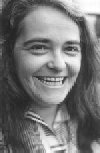 KATE MILLETT was one of the most active and passionate of pioneer feminists. In 1967 she belonged to NYC NOW and practically every other feminist organization in the city. When radical feminists asked why she belonged to "conservative" NOW she'd reply, "If there were a thousand feminist organizations, I'd join them all." (photo left by Cynthia MacAdams) KATE MILLETT was one of the most active and passionate of pioneer feminists. In 1967 she belonged to NYC NOW and practically every other feminist organization in the city. When radical feminists asked why she belonged to "conservative" NOW she'd reply, "If there were a thousand feminist organizations, I'd join them all." (photo left by Cynthia MacAdams)
Kate was born in 1934 in St Paul, MN, the middle of three daughters. Her parents separated when she was very young, and Kate remembers her mother struggling to earn enough to support her daughters. She received her B.A. from the University of Minnesota in 1956 and in 1958 obtained a first-class degree with honors from St Hilda's College, Oxford.
In 1961 Kate moved to Japan to study sculpture. Two years later she returned to the United States with fellow 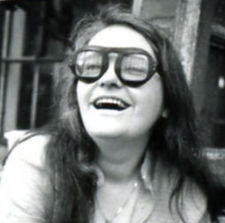 sculptor Fumio Yoshimura, whom she married in 1965, and lived in a three-story loft in New York's famous Bowery. Fumio's art gallery on the top floor was filled with his kites and flying sculptures, Kate's was on the second floor where her works were as down-to-earth as his were ethereal. I especially remember her toilet sculpture of a woman's legs in high heels straddling the bowl. What a statement! sculptor Fumio Yoshimura, whom she married in 1965, and lived in a three-story loft in New York's famous Bowery. Fumio's art gallery on the top floor was filled with his kites and flying sculptures, Kate's was on the second floor where her works were as down-to-earth as his were ethereal. I especially remember her toilet sculpture of a woman's legs in high heels straddling the bowl. What a statement!
In 1968 the toilet graced the Park Avenue building, home of Colgate-Palmolive, where NOW members announced to the world that this company, which sold its products to women, was discriminatory against its female employees financially and professionally. As Anselma dell'Olio poured Ajax down the toilet, we all shouted, "This is where you throw AJAX, women!" In one week C-P changed it's policy.
Kate also led the week-long demonstration against the New York Times to protest that newspaper's refusal to follow Title VII guidelines and desegregate its Help Wanted ads. At the crack of dawn Kate was in front of the Times building urging us on.
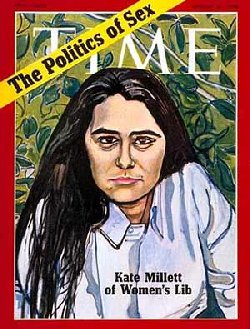 I remember spending hours with others in Kate's loft typing "Token Learning," Kate's work accusing the Seven Sisters colleges of betraying their trust by not providing education for women equal to that of men while boasting that their mission was "to educate women to become good wives and mothers." I remember spending hours with others in Kate's loft typing "Token Learning," Kate's work accusing the Seven Sisters colleges of betraying their trust by not providing education for women equal to that of men while boasting that their mission was "to educate women to become good wives and mothers."
Besides her work with NOW and radical groups, Kate helped organize and run Barnard Women's Liberation. It is a mystery how she had time to write her Ph.D dissertation which, when published as SEXUAL POLITICS in 1970, made her famous and changed her life. The book was said to be "the first book of academic feminist literary criticism" and "one of the first feminist books of this decade to raise nationwide male ire." It was dedicated to her husband, Fumio Yoshimura, who was also a feminist.
For a while she was a media darling. But Kate was never comfortable with her fame. She didn't want to be a "spokesperson" for the Movement, which the media expected of her, and she hated the loss of her privacy. Then, at a talk she was giving at Barnard in 1970 someone shouted out that Kate should come out as bisexual and all hell broke loose. TIME magazine, which had featured her on its cover and had raved about her book, now discredited her. It was a shock to Kate and to everyone who knew and loved her.
Sales of her book fell, speaking engagements dried up, and it seemed her own country didn't appreciate her. But she was greatly admired by feminists around the world and she traveled to many countries speaking and inspiring women. She continued writing, though her other books weren't as well received as Sexual Politics. made films and spent more time at her art. 
In 1971 her marriage to Yoshimura ended, but they remained good friends. She'd bought fields and buildings near Poughkeepsie, N.Y, and, after her divorce she created a Women's Art Colony, a community of female artists and writers paid for by the sale of her silk-screen prints and the Christmas trees hand-sheared by the artists in residence. In 2004, she sold most of the fields, but retained a home there where she spends the summers and most weekends. (right:The Farm House)
A few years ago Kate was diagnosed, like many of her generation, as "bipolar". She did something unusual: she won her own sanity trial in St. Paul. On a dare with her lawyer, together they changed the State of Minnesota's commitment law. She has since become an advocate for all those who labor under the stigma of mental health -- as a representative of MindFreedom International at the United Nations regarding the Convention on the Rights of Persons with Disabilities, recently signed by President Obama.
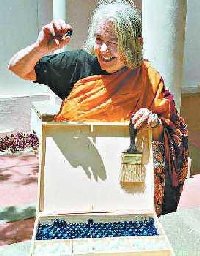 Today she divides her time between her New York apartment and the farm in Poughkeepsie, writing, sculpting, and painting. (photo left: by Sampath Kumar G.P. - Kate was in Bangalore March 2002. She read out excerpts from her work, Sita, and also launched her installation, American Dreams Go To Pot) Today she divides her time between her New York apartment and the farm in Poughkeepsie, writing, sculpting, and painting. (photo left: by Sampath Kumar G.P. - Kate was in Bangalore March 2002. She read out excerpts from her work, Sita, and also launched her installation, American Dreams Go To Pot)
Jacqui Ceballos
Kate's books: Sexual Politics, The Prostitution Papers, Flying, Sita, The Basement, Going to Iran, The Loony-Bin Trip, The Politics of Cruelty, A.D.: A Memoir, Mother Millett.
Her film: Three Lives.
She has also participated in many film interviews, including Des fleurs pour Simone de Beauvoir, The Real Yoko Ono, Bookmark, Daughters of de Beauvoir, Not a Love Story (a film about pornography made in 1981 by the Canadian Film Board). The same producer gave a study of her literary work and style in French Canada in a magazine called "La Vie en Rose". The story of Michael X was an oration given at Oxford University. There are many other film interviews with German film-makers and much archival footage of Kate Millett's speeches in Turkey.
Her works also include translations into many languages, to name a few -- Turkish, Korean, Japanese, German, and all the Scandavian languages.
Sexual Politics was just reissued in a new edition in Spanish. With the exception of Sexual Politics, all her works are "out of print" -- Kate has, like Picasso, bought herself in. It's a sad occasion for an author so productive, but also an opportunity. She is now free to sell her books abroad and to Americans at reasonable prices. Most of her books cost $25 in hard cover or in paperback. Certain texts, "first editions", are more expensive. The "Elegy for Sita" is still only $50, as it was the first day it was issued by Targ Press -- using fine papers with a type of her own choice, including illustrations. She will henceforth print her own pictures at the farm under her own imprint called Loosestrife Press. Size will be bound by the size of the paper, 20" x 40" and 20" x 25", suitable for framing.
She has exhibited her artwork all over the world.
-----------------------------------------------
Andrea Dworkin on Kate Millett
Published in the NEW STATESMAN - July 14, 2003
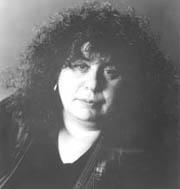 The world was sleeping and Kate Millett woke it up. Betty Friedan had written about the problem that had no name. Kate Millett named it, illustrated it, exposed it, analysed it. (right: Andrea Dworkin) The world was sleeping and Kate Millett woke it up. Betty Friedan had written about the problem that had no name. Kate Millett named it, illustrated it, exposed it, analysed it. (right: Andrea Dworkin)
Thirty-three years later, it is hard to remember or envision the convulsive shock of this new idea. Male-over-female had been seen as a physical inevitability not unlike gravity. Nothing that had to do with sex was open to questions of power, dominance or hierarchy. Social sex roles originated in and were determined by biology or a supernatural divinity. The male was the figure of action, even heroism. He alone was made in God's image. He ruled in religion, marriage and politics as conventionally understood. His sovereign place as head of the family was unchallenged. Millett called this arrangement "patriarchy", which she described as "male shall dominate female, elder male shall dominate younger".
Millett described the "consent" of the female to this male-over-female paradigm as a process of socialisation in which women were constrained to be passive, ignorant, valued if at all for bearing children, a function shared with animals; men were distinguished by the distinctly human characteristics. Women were socialised to accept both the superiority of men and their own inferiority, which was then justified by assertions of male biological superiority: men were physically stronger. Patriarchy itself was seen as inevitably derived from the superior physical strength of the male. Millett went on to hypothesise a civilisation that was pre-patriarchy; if this civilisation existed, she reasoned, then male strength could not be the signature reason for patriarchy.
Millett also attacked gender as such. There were too many varieties of biological phenomena associated with being male or female to reify any simple-minded biological determinism. She saw the constituent parts of gender as socially determined, ideologically reinforced by master-sex dominance.
Millett also described the economics of sexual politics: females worked for no money or less money. She described the ways in which women have always worked but without adequate recompense, which helped keep women under the sway of men. She also described the use of force against women, including the phenomena of compulsory pregnancy and rape. She analysed the role of the state in maintaining the inferiority of women and also the role of legal systems in various societies.
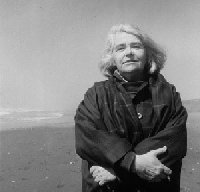 Remarkably, she noted how "references to wife-beating, for example, invariably produce laughter and some embarrassment". Jokes about wife-beating abounded while it was society's position that no such brutality really existed. Millett claimed that hostility towards women was expressed through laughter and "[m]isogynist literature", which she called "the primary vehicle of masculine hostility", being both a "hortatory and comic genre. Of all the artistic forms in patriarchy it is the most frankly propagandistic. Its aim is to reinforce both sexual fac-tions in their status." (left: Kate Millett, photograph, 1994, © Happy/ L.A. Hyder) Remarkably, she noted how "references to wife-beating, for example, invariably produce laughter and some embarrassment". Jokes about wife-beating abounded while it was society's position that no such brutality really existed. Millett claimed that hostility towards women was expressed through laughter and "[m]isogynist literature", which she called "the primary vehicle of masculine hostility", being both a "hortatory and comic genre. Of all the artistic forms in patriarchy it is the most frankly propagandistic. Its aim is to reinforce both sexual fac-tions in their status." (left: Kate Millett, photograph, 1994, © Happy/ L.A. Hyder)
Millett's methodology was new. While using anthropology, sociology, economics and history to back her argument, she found the meaning of sexual politics and sexual power in literature. She eschewed prior schools of literary criticism and declared her own criticism a "mutation": "I have operated on the premise that there is room for a criticism which takes into account the larger cultural context in which literature is conceived and produced."
Albany, NY 1971. Gay rights demonstration,
on Capitol steps at first protest march. At podium, Kate Millett, behind Madeline Davis (with Buffalo Radicalesbians sign), Donald Licht (with Mattachine Buffalo sign)
Davies, Diana, 1938- , 1938- -- Photographer
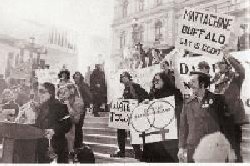 |
Millett used contemporary literature to demonstrate her notion of "sexual politics". While other critics danced on the graves of dead writers, Millett dug some new graves herself. She especially concentrated on the works of D H Lawrence (dead but widely read as if he were a contemporary), Henry Miller (then living), Norman Mailer (then living) and Jean Genet (then living). While she discussed ancient, medieval and Renaissance literature in the west and eastern literature in general as bulwarks of misogynist hierarchy, she opened her book with three sex scenes, one each from Henry Miller's Sexus, Norman Mailer's An American Dream and Jean Genet's The Thief's Journal. She explicated the power dynamics in each sex scene - Genet being contrapuntal because he approached "sexual hierarchy from the oblique angle of homosexual dominance". She used Genet because he dealt with sexual oppression.
When Millett wrote Sexual Politics, Miller, Mailer and Lawrence were the sages of sexual liberation. These writers were primary influences on the generation that came of age in the 1960s. It is hard now to understand the grip these writers had on the imagination. For the left and the burgeoning counter-culture, these were the writers of subversion. In fact, they helped to socialise a generation into believing that force and violence were valued elements of sex. Millett's analysis destroyed their authority.
I cannot think of anyone who accomplished what Kate Millett did, with this one book. It remains the alpha and omega of the women's movement. Everything that feminists have done is foreshadowed, predicted or encouraged by Sexual Politics.
Andrea Dworkin (September 26, 1946–April 9, 2005), radical feminist and writer best known for her criticism of pornography, which she argued was linked to rape and other forms of violence against women.
Myra Kovary, Kate's friend, says "please add that Kate's papers are housed at Duke University."
Kate's website.. www.katemillett.com
COMMENTS: jcvfa@aol.com
Back to VFA Fabulous Feminists Table of Contents
|

 KATE MILLETT was one of the most active and passionate of pioneer feminists. In 1967 she belonged to NYC NOW and practically every other feminist organization in the city. When radical feminists asked why she belonged to "conservative" NOW she'd reply, "If there were a thousand feminist organizations, I'd join them all." (photo le
KATE MILLETT was one of the most active and passionate of pioneer feminists. In 1967 she belonged to NYC NOW and practically every other feminist organization in the city. When radical feminists asked why she belonged to "conservative" NOW she'd reply, "If there were a thousand feminist organizations, I'd join them all." (photo le sculptor Fumio Yoshimura, whom she married in 1965, and lived in a three-story loft in New York's famous Bowery. Fumio's art gallery on the top floor was filled with his kites and flying sculptures, Kate's was on the second floor where her works were as down-to-earth as his were ethereal. I especially remember her toilet sculpture of a woman's legs in high heels straddling the bowl. What a statement!
sculptor Fumio Yoshimura, whom she married in 1965, and lived in a three-story loft in New York's famous Bowery. Fumio's art gallery on the top floor was filled with his kites and flying sculptures, Kate's was on the second floor where her works were as down-to-earth as his were ethereal. I especially remember her toilet sculpture of a woman's legs in high heels straddling the bowl. What a statement! I remember spending hours with others in Kate's loft typing "Token Learning," Kate's work accusing the Seven Sisters colleges of betraying their trust by not providing education for women equal to that of men while boasting that their mission was "to educate women to become good wives and mothers."
I remember spending hours with others in Kate's loft typing "Token Learning," Kate's work accusing the Seven Sisters colleges of betraying their trust by not providing education for women equal to that of men while boasting that their mission was "to educate women to become good wives and mothers."
 Today she divides her time between her New York apartment and the farm in Poughkeepsie, writing, sculpting, and painting. (photo left: by Sampath Kumar G.P. - Kate was in Bangalore March 2002. She read out excerpts from her work,
Today she divides her time between her New York apartment and the farm in Poughkeepsie, writing, sculpting, and painting. (photo left: by Sampath Kumar G.P. - Kate was in Bangalore March 2002. She read out excerpts from her work,  The world was sleeping and Kate Millett woke it up. Betty Friedan had written about the problem that had no name. Kate Millett named it, illustrated it, exposed it, analysed it. (right: Andrea Dworkin)
The world was sleeping and Kate Millett woke it up. Betty Friedan had written about the problem that had no name. Kate Millett named it, illustrated it, exposed it, analysed it. (right: Andrea Dworkin) Remarkably, she noted how "references to wife-beating, for example, invariably produce laughter and some embarrassment". Jokes about wife-beating abounded while it was society's position that no such brutality really existed. Millett claimed that hostility towards women was expressed through laughter and "[m]isogynist literature", which she called "the primary vehicle of masculine hostility", being both a "hortatory and comic genre. Of all the artistic forms in patriarchy it is the most frankly propagandistic. Its aim is to reinforce both sexual fac-tions in their status." (left: Kate Millett, photograph, 1994, © Happy/ L.A. Hyder)
Remarkably, she noted how "references to wife-beating, for example, invariably produce laughter and some embarrassment". Jokes about wife-beating abounded while it was society's position that no such brutality really existed. Millett claimed that hostility towards women was expressed through laughter and "[m]isogynist literature", which she called "the primary vehicle of masculine hostility", being both a "hortatory and comic genre. Of all the artistic forms in patriarchy it is the most frankly propagandistic. Its aim is to reinforce both sexual fac-tions in their status." (left: Kate Millett, photograph, 1994, © Happy/ L.A. Hyder)